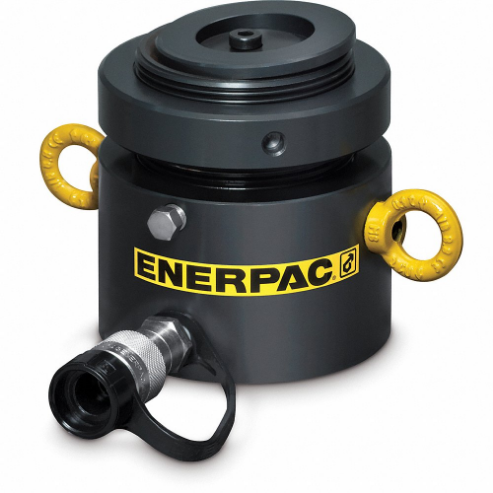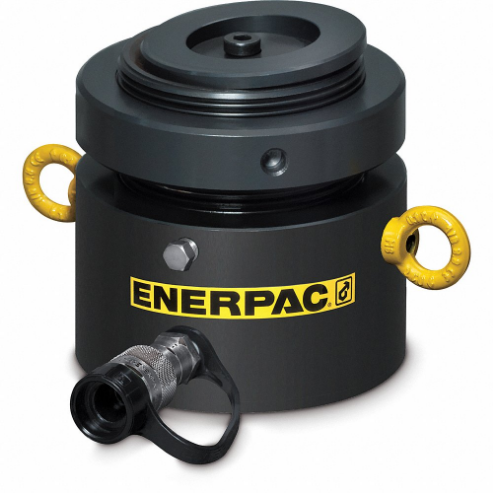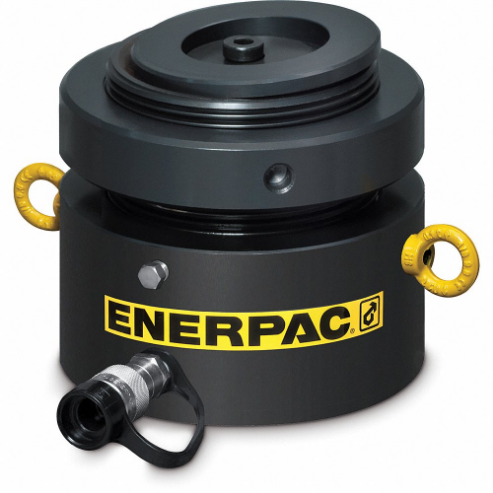Enerpac LPL602 hydraulic cylinder is designed for applications that require precise and controlled hydraulic force. It applies force in one direction and features a lock nut mechanism for secure load holding. This hydraulic cylinder is ideal for the construction, manufacturing, infrastructure and maintenance industries and is used for lifting heavy machinery, pushing or pulling heavy loads and supporting structural components.
Working Mechanism:
- Enerpac LPL602 hydraulic cylinder is filled with hydraulic fluid supplied under pressure through an inlet port.
- When the fluid enters the cylinder, it pushes against a piston, creating force and extending the piston rod.
- The lock nut mechanism, located at the end of the cylinder, engages and securely locks the piston rod in place, preventing unintended movement.
- To retract the piston rod, the hydraulic pressure is released, allowing the fluid to return to the reservoir and the lock nut is disengaged.
Features:
- Enerpac LPL602 lock nut hydraulic cylinder features steel construction that provides strength and resistance to wear.
- This Enerpac LPL602 single-acting hydraulic cylinder have a lock nut mechanism that ensures secure load holding and prevents unexpected movement or load release.
- It has an overflow port for limiting stroke to prevent plunger blowout.
- This Enerpac LPL602 lock nut hydraulic cylinder has a single-acting mechanism for applying force in one direction and allowing efficient operation & controlled movements during lifting and pushing tasks.
Frequently Asked Questions:
Q. Can Enerpac LPL602 single-acting lock nut steel hydraulic cylinder be used for lifting and pushing tasks?
A. Yes, the brand's LPL602 single-acting lock nut hydraulic cylinder is suitable for lifting and pushing applications. It provides controlled hydraulic force in one direction, allowing precise movement and positioning of loads.
Q. How to maintain Enerpac LPL602 single acting lock nut hydraulic cylinder?
A.
- Regularly inspect the cylinder for any signs of leakage, damage or wear.
- Keep the cylinder and its components clean and free from dirt, debris and contaminants.
- Check and maintain the appropriate hydraulic fluid level and quality.
- Ensure proper alignment and mounting of the cylinder to prevent undue stress or misalignment.
- Periodically check and tighten any loose fittings or connections.
- Avoid exceeding the recommended operating pressure to prevent potential damage.
- Store the cylinder in a clean and dry environment when not in use.
 Change Country
Change Country



